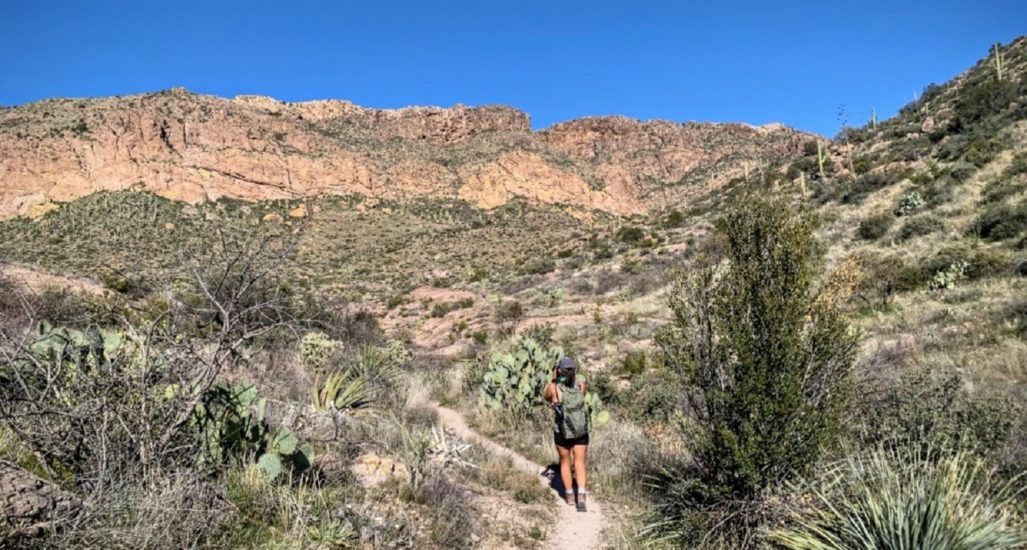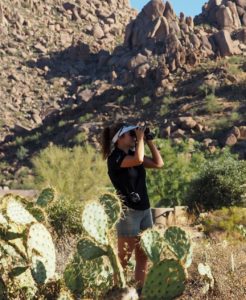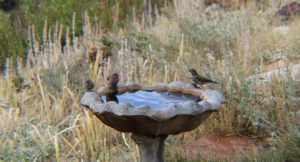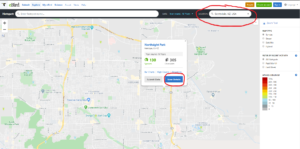How to Get Started Birdwatching in 5 Easy Steps
Posted on April 11, 2020

If you are looking for things to do right now, birdwatching (aka birding) is something worth trying out. It can be done anywhere you are, especially from home! In fact, there are plenty of resources on the internet dedicated solely to backyard birding. Besides, wouldn’t it be fun to be able to identify all the birds around you while you sink some birdies on the course? That’s how you become a #nextlevel golfer

Brianne Kenny is Troon’s Director of Environmental Science
This time of year happens to be ideal to watch birds. Why?
- Spring migration! Many birds are on the move right now so you are likely to see a lot of them as they make their way to their breeding/nesting areas for the summer
- Birds are looking for mates! This means birds are at their most colorful which can make them a lot easier to spot and tell apart. They are also singing their hearts out to attract mates and claim territory. It’s a great time to learn bird songs, which are so unique you can identify a bird without even seeing it!
How to get started in 5 easy steps:
- Choose your spot. If you have a backyard or courtyard, choose a comfortable spot out there or even inside the house near a window. Or, if you can safely get to a local park/garden take a trip over there. Anywhere with bird feeders is a great spot and you can easily set up your own if you want to.
 Look up birds in your area ahead of time. Having a reference of what is out there helps you have a better guess of what you might be seeing or hearing. A field guide is great for this. If you don’t have one, my favorite website is called eBird. Birders all over the world submit their observations and you can see what they submit in almost within a day. It is an incredible tool
Look up birds in your area ahead of time. Having a reference of what is out there helps you have a better guess of what you might be seeing or hearing. A field guide is great for this. If you don’t have one, my favorite website is called eBird. Birders all over the world submit their observations and you can see what they submit in almost within a day. It is an incredible tool
- Go to ebird.org/hotspots and then type your city into the “Location” search bar
- You can view places people have submitted sightings around you. If you click on one of the points and then click the “View Details” button, it will take you to a list bird species spotted by date.
- You can even click on each species name within the list to see photos and listen to their calls.
- Grab binoculars or a camera, if you have them. You do not necessarily need either of these to go birding. You can simply go by what you see and hear with your own senses. However, binoculars give you a much closer look which can be helpful. Having a camera can also be handy so you can get a quick shot of a bird or record their song and review it later on.
- Grab a notebook (or use a phone app for the tech savvy). This again is optional, but it can be helpful. Making notes/drawings of what you see can help if you’re not sure of the ID in the moment. This is how many biologists start off whether it be birds, fungi, plants, or mammals. Additionally, once you get into birding you start keeping lists of what you see each time. You write down things like where you were, how long you were out for, the species you saw, and how many individuals of each species you saw. This is what ebird is: a bunch of birders submitting their lists to the same website.
- Start observing! Head to your spot and start paying attention to what you see and hear. Be patient with yourself as you learn a new skill and have some fun with it. If you’re at home, you could even crack one open for what I lovingly refer to as “Irish birdwatching”
 Additional Resources:
Additional Resources:
- Ebird. Worth exploring the website and learning more about how it works and how you can join if you want to: https://ebird.org/home
- All About Birds. Great online bird guide where you can get tips for ID, hear songs/calls, see range maps, and compare similar birds: https://www.allaboutbirds.org/news/
- Project FeederWatch. Interactive website to see the birds common at feeders in your area, what they eat, and what type of feeder you’re most likely to see them: https://feederwatch.org/learn/common-feeder-birds/#_ga=2.201447186.2017009655.1585151637-869434602.1572988843
- National Audubon Society. Lots of information for backyard birding with adults and children: https://www.audubon.org/birding/backyard
 Look up birds in your area ahead of time. Having a reference of what is out there helps you have a better guess of what you might be seeing or hearing. A field guide is great for this. If you don’t have one, my favorite website is called eBird. Birders all over the world submit their observations and you can see what they submit in almost within a day. It is an incredible tool
Look up birds in your area ahead of time. Having a reference of what is out there helps you have a better guess of what you might be seeing or hearing. A field guide is great for this. If you don’t have one, my favorite website is called eBird. Birders all over the world submit their observations and you can see what they submit in almost within a day. It is an incredible tool